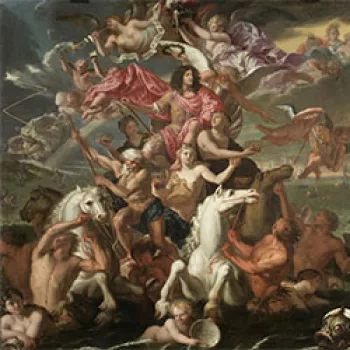Four St. George's Salts 1821 later addition
Silver gilt | 39.4 cm (parts .a and .b together) | RCIN 31777
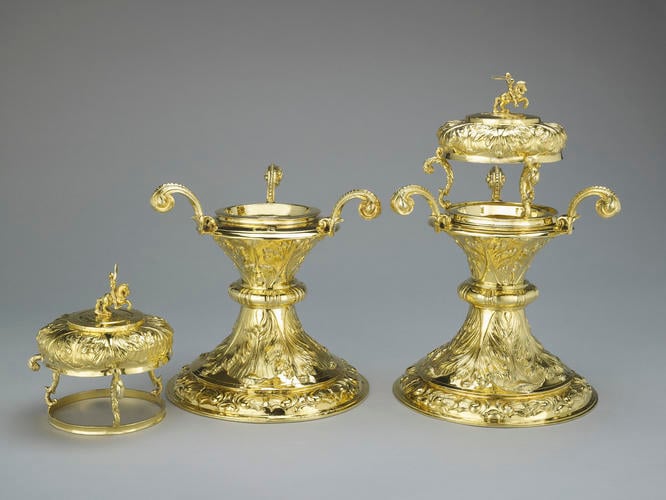
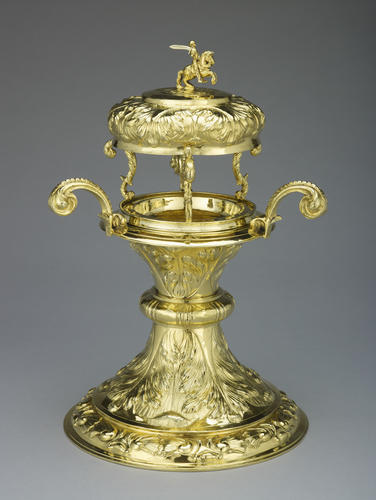
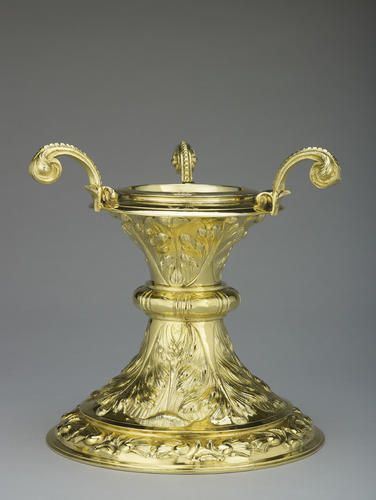
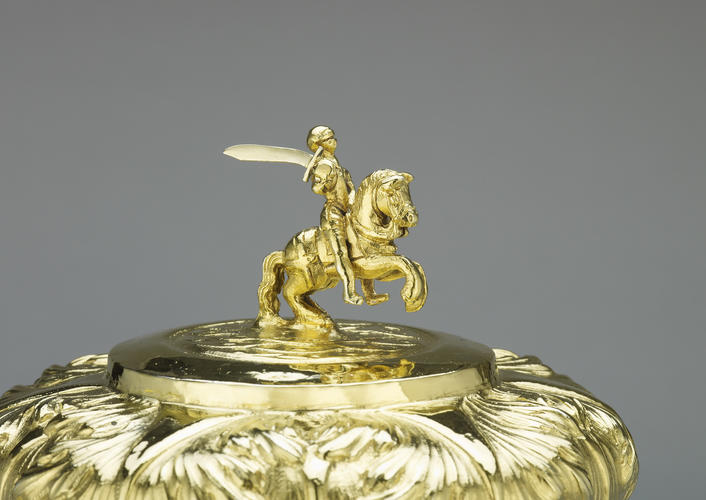
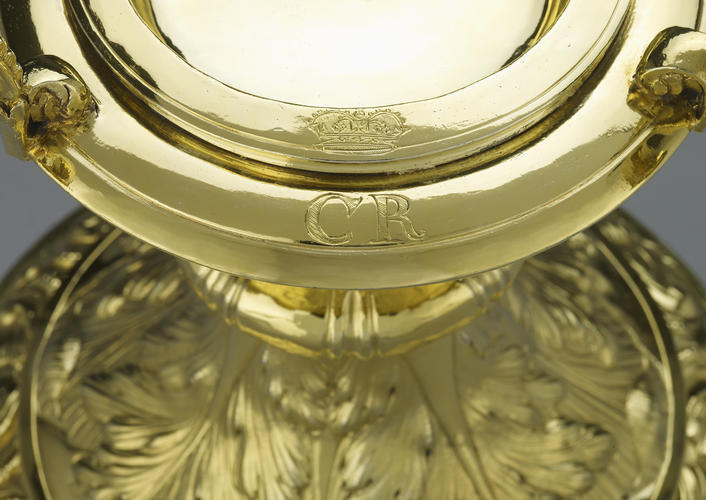
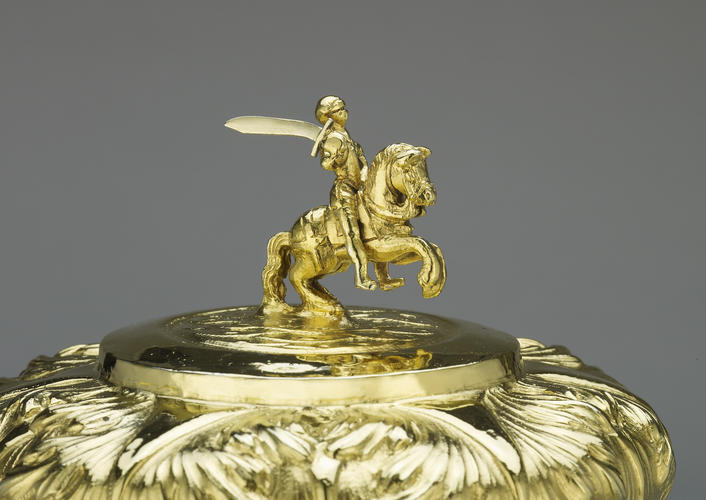
-
Four silver-gilt salts of 'pully' form, each on a spreading base, the border chased with wings and scrolls; the upper and lower parts chased with acanthus and palm leaves springing from the knop; from the rim spring three curled scrolls; each with a detachable canopy on three scroll supports with a mounted knight finial.
Three of the canopies are contemporary with the salts (1661), but the fourth canopy is hallmarked 1821, and was presumably made to replace one lost.
Among the plate held in the Jewel House in the late seventeenth century were 12 salts, traditionally known as the St George's Salts. Only 11 survive, comprising two sets of four and three individual works. One set of four and the three individuals are all constructed in a similar manner, with a pulley- or capstan-shaped body and canopy above the well, each supporting a small figure of a knight on horseback. Some of the 11 carry a date mark for 1660/1 suggesting that all 12 were commissioned at the same time, contracted to several different goldsmiths.
There are differing explanations as to the iconography of the mounted figure. Given the date of the commission it is likely that the salts were considered a necessity for the coronation banquet and that the figure finials represent the King's Champion, who traditionally rode into Westminster Hall and challenged the assembly on behalf of the king. An alternative is possible, however. In 1696 the Jewel House inventories list the salts as 'Saint George's Salts' for the first time, and it seems likely that the figure represents the saint. It is surely no coincidence that both Charles II and James II elected St George's Day, 23 April, as the date of their respective coronations – a patriotic gesture and an eternal linking of the monarch to the patron saint of England. It would therefore be natural to select the saint to appear on the salts.
A third explanation also arises. Only days before the coronation, Charles II resurrected the Order of the Garter. In April 1661, 14 knights, both those who had been elevated during the king's exile and those newly appointed, among them the future William III, were installed with full ceremony at Windsor. It is possible therefore that the St George's Salts were commissioned for use at the Garter banquet, the figure finials chosen in honour of the Order's patron saint. Each salt is thought to have served four Garter Knights and there is some evidence that a larger set originally existed and several of the salts were melted down in 1680, leaving only 12, of which 11 survive.
Text adapted from Charles II: Art and Power (2017).Provenance
Commissioned for Charles II, with one canopy made later to replace one lost, 1821.
-
Creator(s)
(nationality)Acquirer(s)
-
Medium and techniques
Silver gilt
Measurements
39.4 cm (parts .a and .b together)
24.8 cm (at base of object)
Category





